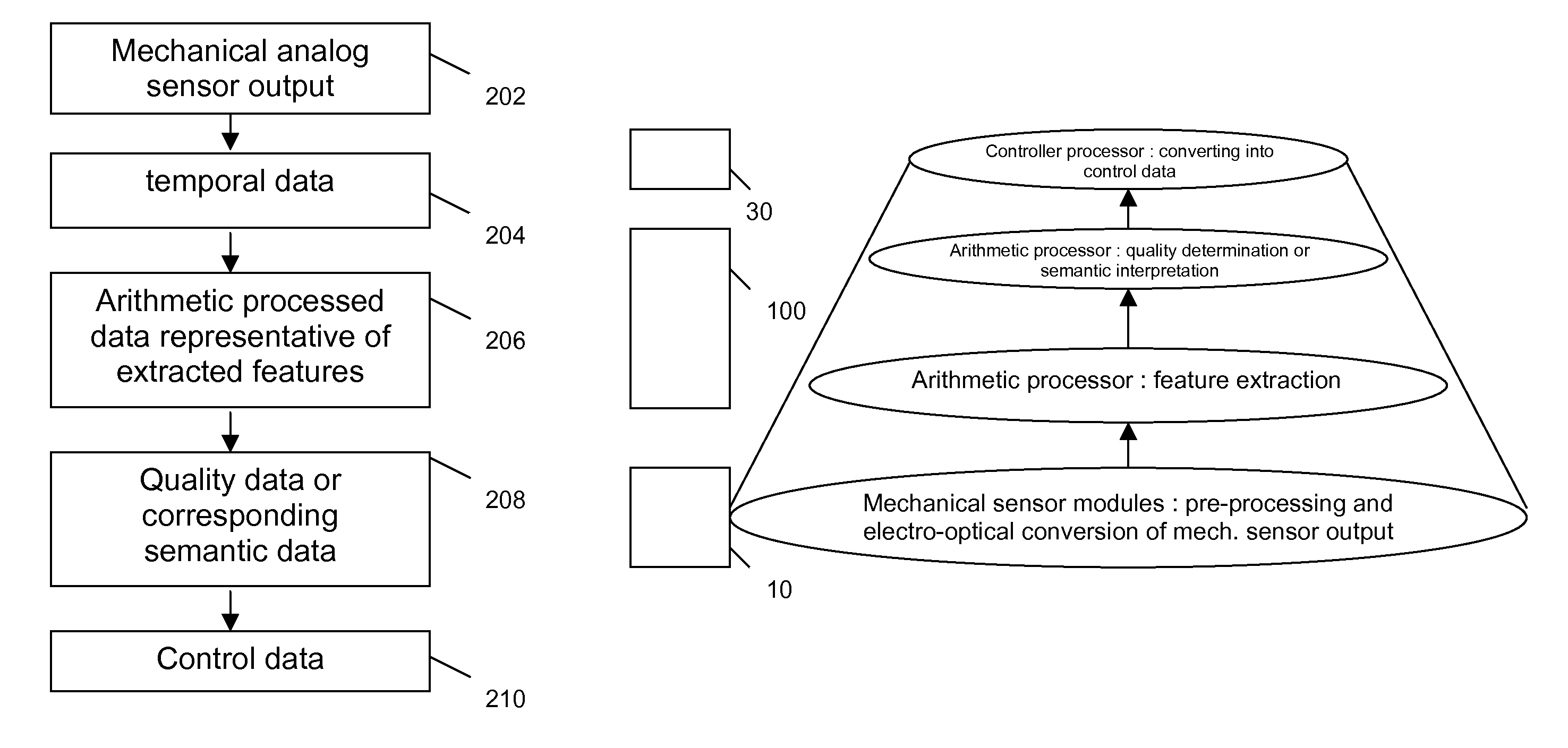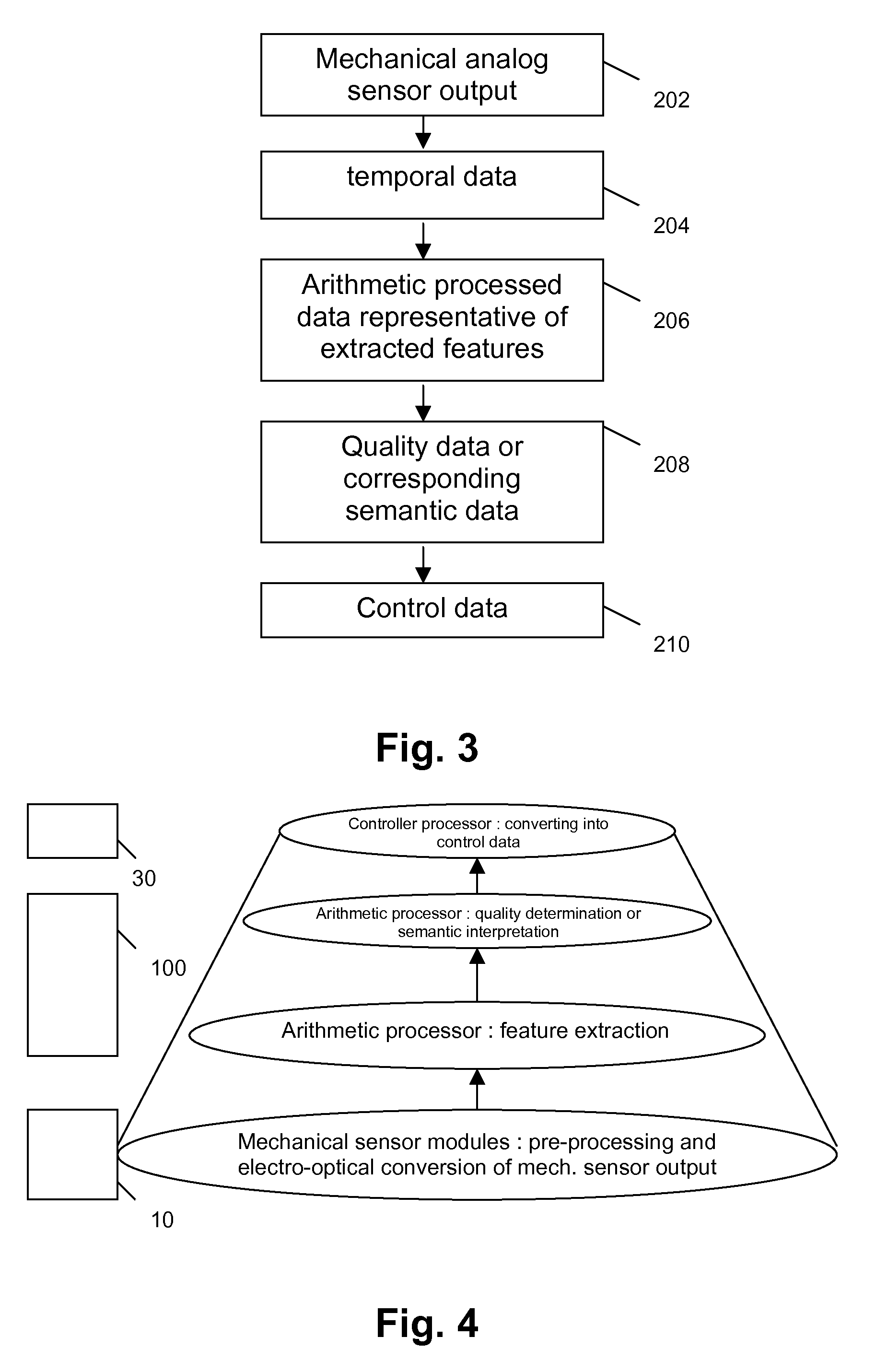Methods and systems for data processing and their applications
a data processing and data technology, applied in the field of data processing, can solve the problems of not being able to share most everyday life tasks with humans, not being able to manipulate or interact with unknown or unpredictable objects or living beings, and being complex and sophisticated systems that require high computational power
- Summary
- Abstract
- Description
- Claims
- Application Information
AI Technical Summary
Benefits of technology
Problems solved by technology
Method used
Image
Examples
example 1
Computerised System
[0118]A computerised system 600 as discussed in the present example is shown schematically in FIG. 11, wherein both the anthropomorphic arm 602 and the biomechatronic hand 604 are indicated. The biomechatronic hand 604 with two fingers mounted and sensorised was installed, whereby each finger was controlled by only one pulling cable, in such a way that the hand adaptively can wrap the grasped objects. A task controller 610 is used for controlling the arm 602 and / or hand 604 resulting in a smooth and vibrations-free movement. In the present example, the inner surface of each fingertip was covered with three tactile modules, consisting of a flexible array of micro-fabricated force sensors 606 and electro-optical converters. In this particular case, each module array consists of a number of microfabricated triaxial force sensors 606 assembled on a flexible substrate and covered with a soft polyurethane layer with protection and grip purposes. Three electrical signals...
example 2
Detection of Features
[0119]For the present example of grasping, algorithms based on the recognition of three kinds of tactile events, recognized in the temporal domain are used, being variation, oscillation and vibration. These three types of features are, in the present description, described as follows:[0120]variation: a given tactile signal contains a variation if its intensity changes by at least a given threshold a in the same period T. The threshold σ thereby is, in the present example, defined in terms of pixel intensity, expressed in number of grey levels (out of 255) and depends on the noise level of the tactile signals; a variation can be positive, if the intensity increases, or negative. A preliminary characterization of the tactile module and the noise performances of the sensors in the present example allowed to consider σ=5 grey levels (2% of the entire dynamic range).[0121]oscillation: an oscillation is the composition of two subsequent variations of opposite sign in ...
example 3
Determination of the Quality of Features
[0128]Determination of the quality of the features and correlating it with semantic features in the present example is performed by checking the stability over time of the extracted features. The latter preferably takes into account not only time features, as used for extracting features from the data signal, but also spatial and intensity features. Such a mix may be especially suitable for grasping objects of extremely slippery nature and having a smooth surface, such as e.g. with tofu. When grasping less slippery objects, in some cases only temporal information features is sufficient. Therefore, the safety of the grasp may also be based on a size of the contact area and on the minimum applied force control.
[0129]Determination of the quality of features, may e.g. be performed as soon as some initial contact has been detected. By way of illustration, the present invention not being limited thereto, an exemplary CNN algorithm, as can be used is...
PUM
 Login to View More
Login to View More Abstract
Description
Claims
Application Information
 Login to View More
Login to View More - R&D
- Intellectual Property
- Life Sciences
- Materials
- Tech Scout
- Unparalleled Data Quality
- Higher Quality Content
- 60% Fewer Hallucinations
Browse by: Latest US Patents, China's latest patents, Technical Efficacy Thesaurus, Application Domain, Technology Topic, Popular Technical Reports.
© 2025 PatSnap. All rights reserved.Legal|Privacy policy|Modern Slavery Act Transparency Statement|Sitemap|About US| Contact US: help@patsnap.com



